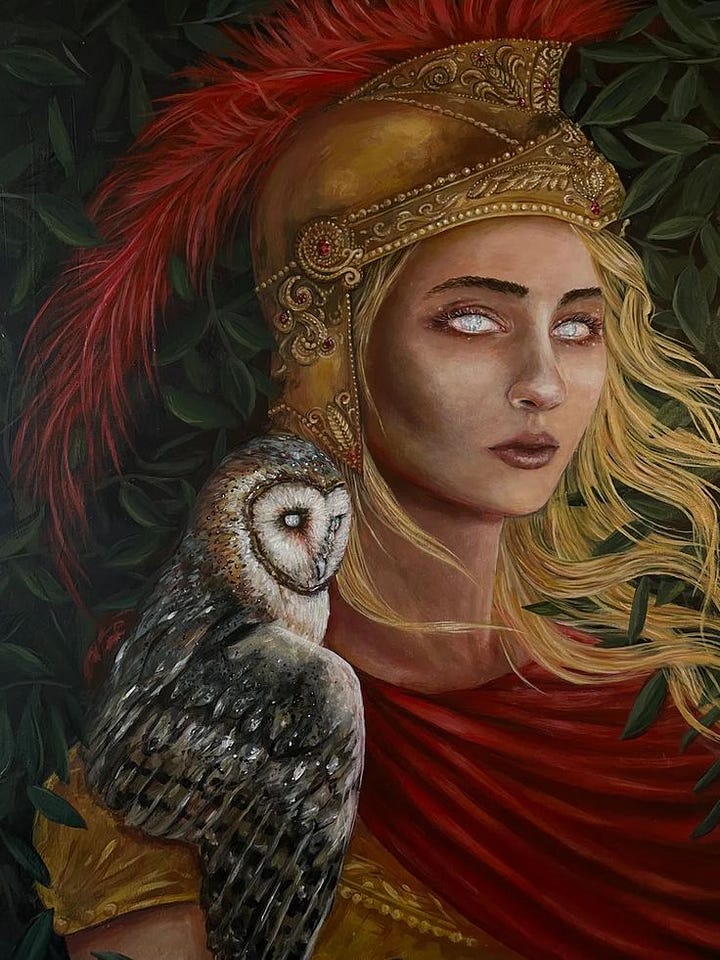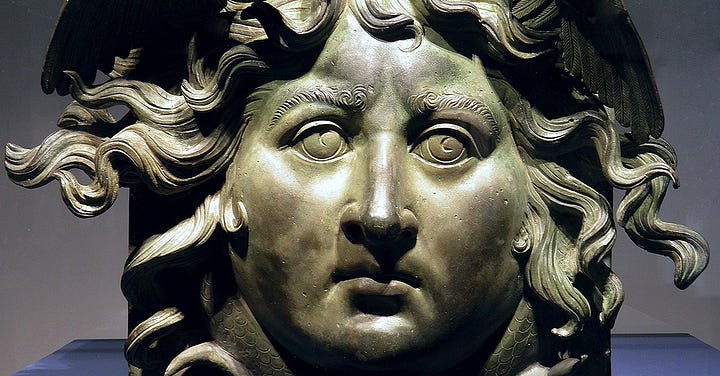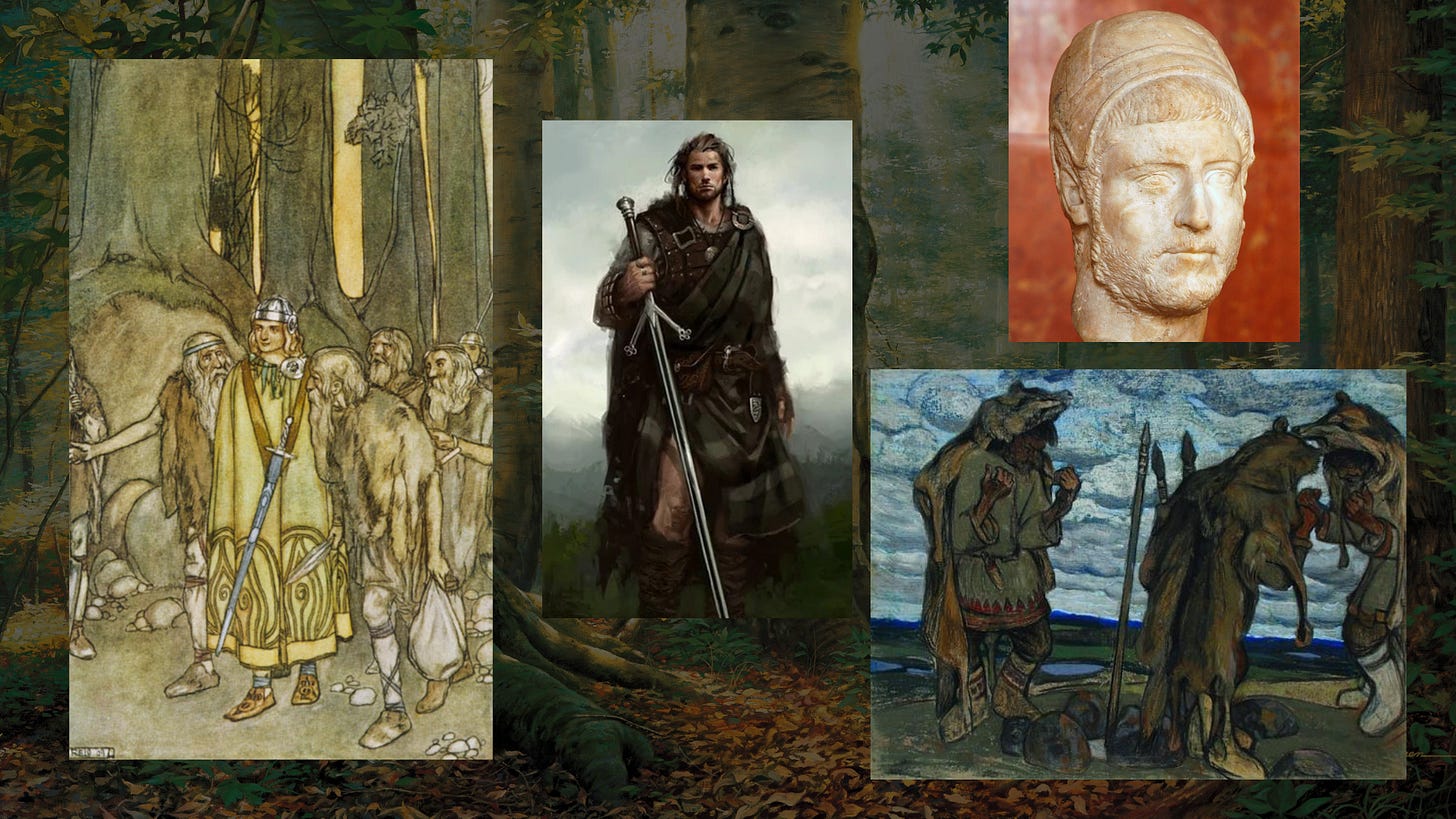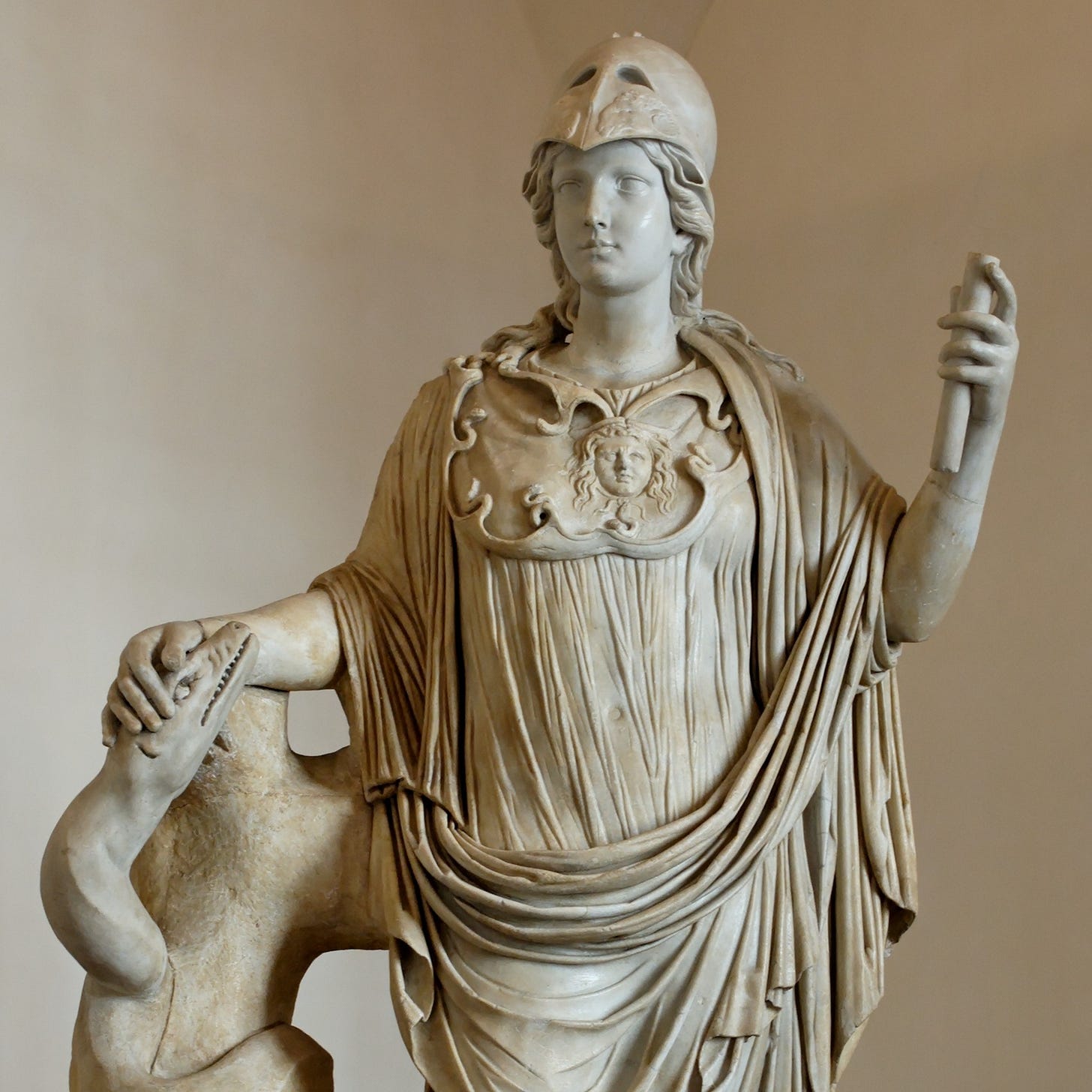In ancient mythologies and cultural traditions, the journey linked to self-discovery, wholeness, and leadership is symbolized by archetypal stories, best known as myths. Yet somewhere along the way, the true essence of this journey, due to civilizational trauma and wounding of the soul of humanity, has been co-opted by a more superficial narrative. The original hero’s journey, once aligned with the wilderness, the divine feminine, and the restoration of balance and wholeness, became distorted into a quest for dominance, conquest, and the projection of the shadow onto others. Nowhere is this transformation more evident than in how mythologies such as that of the Fianna, the legendary warriors of Irish lore, who once embodied what we now label as the “heroine’s journey,” or with the Arkteia of Artemis.
This article will explore the forgotten depth of the hero’s journey as practiced by the Fianna, and contrast it with the distorted modern hero archetype. To examine how this original journey aligns more closely with what we now call the heroine’s journey. Which is a path of integration, humility, balance and wholeness.
The Fianna: Guardians of Sovereignty and Wholeness
The Fianna were not just warriors; they were protectors of the land, its people, and its sacred balance. They were known for their cattle raiding myths though, and their heroic deeds to protect and defend the community. Yet the Fianna also had three mottoes. Purity of our hearts. Strength of our limbs. Action to match our speech.
A Sovereignty Goddess like The Morrígan that the Fianna were dedicated to can be traced back to a much more ancient goddess. Known as the Mistress of the Beasts or Mistress of Animals. Which Artemis as daughter of Leto, is also related to. They symbolize humanity’s deep connection to the natural world, where humans and animals are interdependent.
She later evolved into the Sovereignty Goddess, tied to various cities. Each city had their goddess who protected them and would bring health and well-being, next to fertility to the kingdom. Retaining her connections to the underworld and the natural world. Which included shapeshifting and fertility. Think also here the Norse Goddess Freyja. We can see this connection as well with the Roman goddess Juno. She is the mother of the war god Mars, and her name means to rejuvenate. She was also linked to the Lupercalia ritual as Juno Lucina, where the purpose was to bring renewal and fertility to the tribe, linked to the ancient wolf priests, who would venture into the cave which for the Romans symbolised the underworld, and the place of the ancestors.
We can see this similarly with the Morrígan who is associated with war and fate, but also foretelling doom, death, or victory in battle. She also was seen as a manifestation of the sovereignty-goddess as well, representing the goddess's role as guardian of the territory and its people. It has also been suggested that the Morrígan, who has been linked to Danu, was closely linked to the Fianna, and that these groups may have been in some way dedicated to her.
So under the guidance of the Morrígan, the goddess of sovereignty, war, and transformation, their role extended far beyond physical combat. Their work involved a deep relational connection to the land, the cycles of life and death, and the sacred feminine. The Morrígan, often depicted as both terrifying and wise, demanded that the Fianna face not just external threats, but also their own inner shadows. In doing so, they became stewards of sovereignty. True leaders who served the land and its people with humility and wisdom.
This journey was not about domination or personal glory. Instead, it required the Fianna to undergo a deeper inner transformation. By confronting their own fears, vulnerabilities, and egos. By engaging with the Morrígan and the wild forces she represented, they learned to balance their inner and outer worlds. Their ultimate goal was not conquest but the restoration of wholeness. Of the land, the community, and themselves.
The Heroine’s Journey vs. The Distorted Hero’s Path
Joseph Campbell’s hero’s journey has become a dominant framework for understanding narratives of personal and collective transformation. However, the version of the hero’s journey that has permeated modern storytelling often emphasizes external triumph, conquest, and the suppression or destruction of the shadow. This version, while compelling, is a distortion of the original archetype.
The heroine’s journey, as articulated by thinkers such as Maureen Murdock, offers a much needed counterbalance. She emphasizes healing, integration, and the reclamation of wholeness as the path. Rather than conquering the shadow, the heroine’s journey involves accepting and integrating it, recognizing that the shadow contains valuable truths. This journey is relational rather than adversarial; it seeks harmony with the self, others, and the natural world. Here the feminine is not something to be dominated, tamed, or “purified”.
The Fianna’s journey aligns far more closely with the heroine’s path than with the distorted modern hero archetype. Their work with the Morrígan required them to embrace vulnerability, listen to the wisdom of the land, and restore balance rather than merely impose their will. In this sense, the Fianna exemplify the original hero’s journey. One rooted in service, humility, and relational harmony. That in the ancient Proto-Indo-European sense is what restores the cosmic order, and makes a good king.
Restoring the Original Hero’s Journey
The original hero’s journey was not about dominance but about transformation, integration, and stewardship. In ancient cultures, this journey was undertaken in the wilderness. Taking place at dusk and dawn, where the fire of renewal would be kindled in ritual. This being the case for Wolf-Apollo under the guidance of his mother Leto, linked to the underworld. Yet also for Artemis and her Arkteia. Or Feronia and Apollo with the wolves of Soranus, and their underworld journey. It is the liminal space where people could confront their own shadows and emerge transformed. This process is guided by the divine feminine. Embodied by goddesses such as Artemis, Diana, the Morrígan, Hecate, Juno-Feronia and others. Who represented the wild, untamed forces of nature and the cycles of life and death.
Men and women alike undertook this journey. And though its qualities such as for instance vulnerability, humility, and relational harmony, have in our modern age been coded as “feminine”. Yet the act of facing one’s shadow, not to conquer it but to really integrate it, is a deeply courageous act, requiring profound inner strength. This path is also embodied by figures such as the Korybantes, who nurtured the infant Dionysus and protected him from the Titans. Their role was not to dominate but to guard, nurture, and restore balance.
The Heroine’s Journey and Modern Leadership
The Fianna’s journey under the Morrígan’s guidance also offers a model of leadership that is desperately needed in today’s world. It is a path of healing and integration, not dominance. Leaders thus must confront and integrate their own shadows, recognizing that their personal growth is inseparable from their ability to lead others. So it is not about domination but about building relationships. With the self, others, and the environment. True leadership serves the greater good, prioritizing the well-being of the community and the environment over personal gain or profits. They have to be willing to listen, learn, and adapt, embracing their own vulnerabilities as a source of strength. As it is within the unconscious and the feminine that true wisdom lies.


The Slandering of Medusa and the Loss of the True Path
The distortion of the hero’s journey is also further highlighted by the myth of Medusa. Once a powerful symbol of feminine wisdom and protection, tied to an aspect of Athena as Sovereignty Goddess, Medusa was transformed into a monster to be slain.
We can see this still in the more ancient form of worship connected to Athena. As in the Parthenon in Athens, there is a statue of her that holds Nike (Victory), and in the other hand a spear; where at her feet lies a shield and near the spear is a serpent. There also being a statue where she pets a snake, where there is as well a dragon of Athena mentioned by Philostratus the Elder. Athena was then also considered the thea sôteira, meaning a saviour goddess (also Artemis and Apollo being saviour deities). Where the serpent, the symbol of perpetual rejuvenation, was sacred to her.
However in Hellenistic times the culture and its myths became more and more disconnected from its Proto-Indo-European root. Splitting the feminine into submissive mothers, were figures like Athena, were split into Athena versus Medusa. Something which was once sacred to her, the serpent, becoming smeared as evil.
Medusa’s story represents the scapegoating and suppression of the feminine, both within people and in society at large. This is then also the shadow of the distorted hero archetype. A path that projects the shadow outward, seeking to destroy it rather than integrate it. Which is the modern “heroes journey”, which leads to scapegoating, and the marginalisation of the feminine and all what is deemed “other.”
Restoring the original hero’s journey requires reclaiming figures like Medusa and the Morrígan. It is about recognizing their wisdom and power. It requires us to see the hero’s journey not as a path of conquest but as a path of healing, integration, and restoring relational harmony and wholeness. To give the feminine her rightful place.
Author’s Note
My work seeks to uncover and reclaim the deeper, interconnected truths of the Neolithic and early spiritual traditions: a time when humanity lived in closer harmony with nature, the cycles of life and death, and the sacred balance of the divine feminine and masculine. It is an effort to peel back the layers of distortion and conditioning that have obscured these truths for millennia. To find the ancient feminine wisdom, waiting to be remembered.









